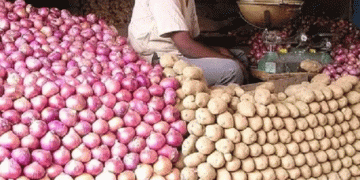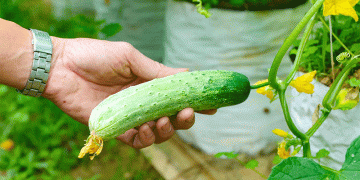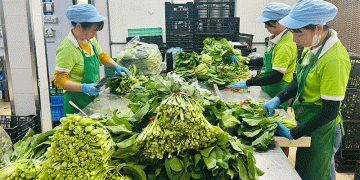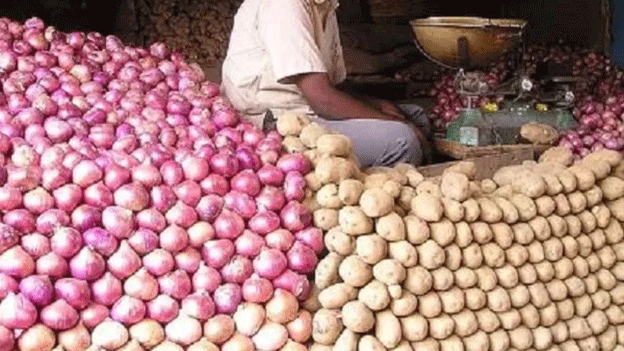The 2023-24 agricultural season is presenting challenges for India’s staple crops, particularly onions and potatoes. With onion production projected to decrease by 19.76%, falling to 24.24 million tons, and other vegetable crops also facing reduced yields, food prices may be heading for another surge. The Indian Meteorological Department (IMD) has predicted erratic rainfall, which could further affect key horticultural crops like onions, brinjal, and yam. This has raised concerns about food price inflation, despite the Reserve Bank of India (RBI) indicating a recent reduction in overall inflation.
Key Factors Impacting Onion and Potato Production
The drop in onion production is largely due to unfavorable weather conditions, including excess rainfall in certain regions. Excessive rain not only delays planting but can also lead to crop diseases that severely impact yields. According to the RBI, this production decline could pose a risk to food prices as onions are a staple ingredient in Indian cuisine, and any disruption in their supply chain typically leads to price hikes.
The story is similar for potato crops. Potatoes, which are another essential part of the Indian diet, are also at risk due to climatic changes. While official estimates of potato production have yet to confirm a significant drop, reports suggest that the crop may not meet expectations in some regions, contributing to a broader increase in food prices.
Inflation and Horticulture Output
The Indian government’s third advanced estimate for horticultural production has revised its earlier projections slightly downward. Total horticulture production is now expected to be 353.19 million tons, a 0.65% decline from the previous year. Although this drop appears marginal, it is significant when considering that potatoes and onions make up a substantial portion of this output. The second advanced estimate for 2023-24 had forecast 352.23 million tons.
Despite a slight decrease in horticultural output, the RBI warns that food inflation risks are still high, largely due to volatility in vegetable prices. Even though headline inflation appears to be under control, food prices, driven by onions and potatoes, remain vulnerable to supply-side disruptions.
Consumer and Farmer Impact
For consumers, this situation could translate into higher grocery bills in the coming months. Onion prices are already showing signs of rising, and the reduction in supply will only exacerbate the issue. Meanwhile, farmers might face challenges of a different kind. While higher prices could potentially benefit some, many producers are grappling with increased production costs and lower yields. The erratic weather patterns have not only reduced the quantity of produce but also affected the quality, making it harder for farmers to get a good price for their crops.
The combination of lower production estimates for onions and potatoes, alongside adverse weather conditions, suggests that India could face rising food prices in the near future. The RBI’s caution about inflation risks remains valid, particularly as these essential crops struggle with unpredictable weather. Both farmers and consumers will need to brace for potential price hikes, with the situation likely to evolve over the coming months as Kharif season crops enter the market.
































